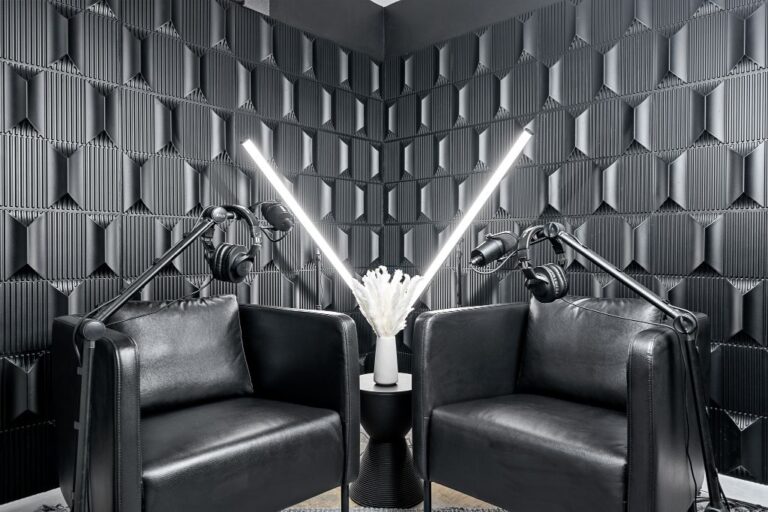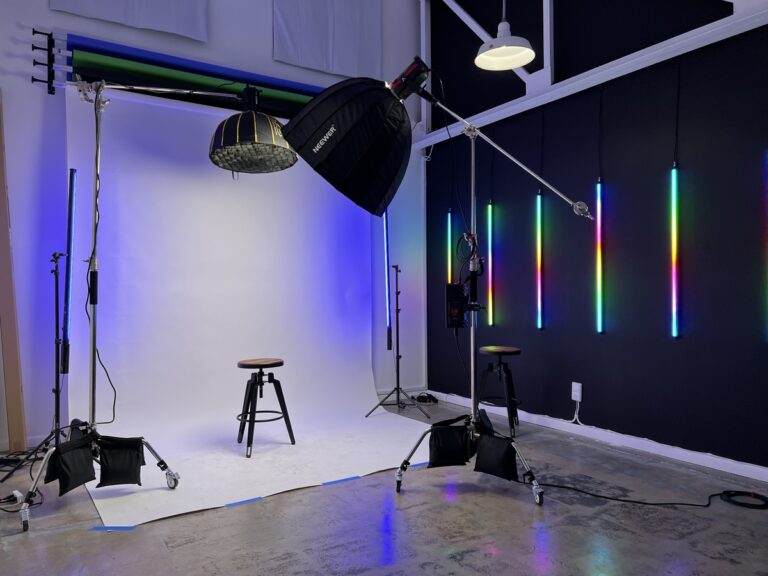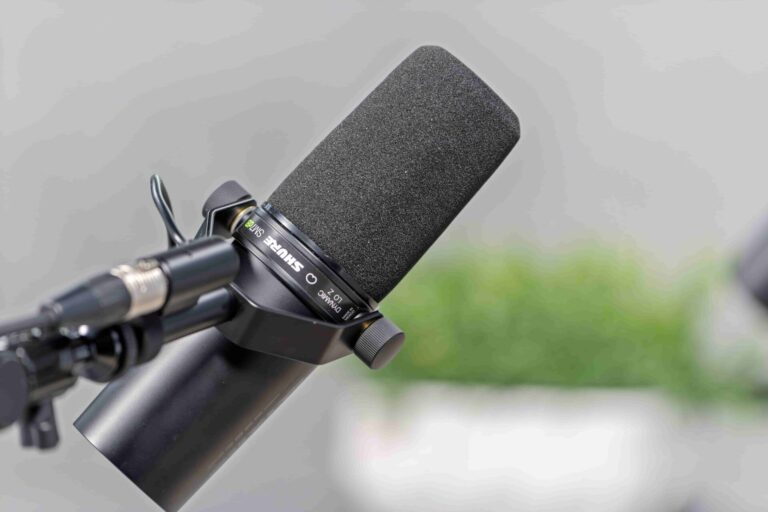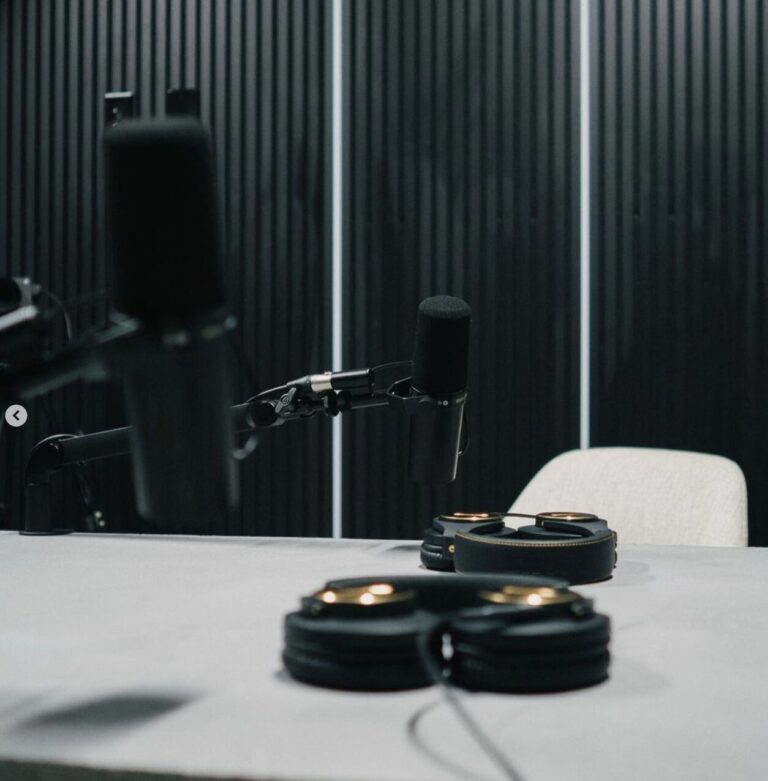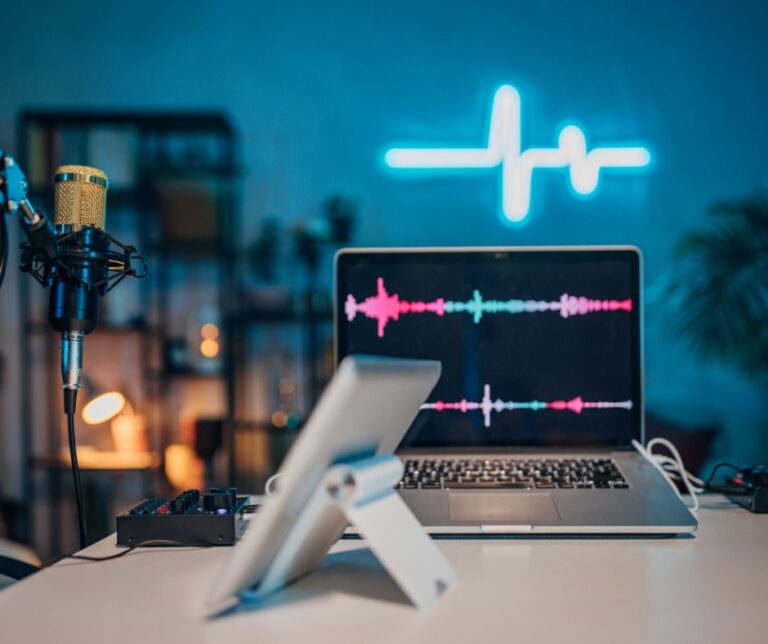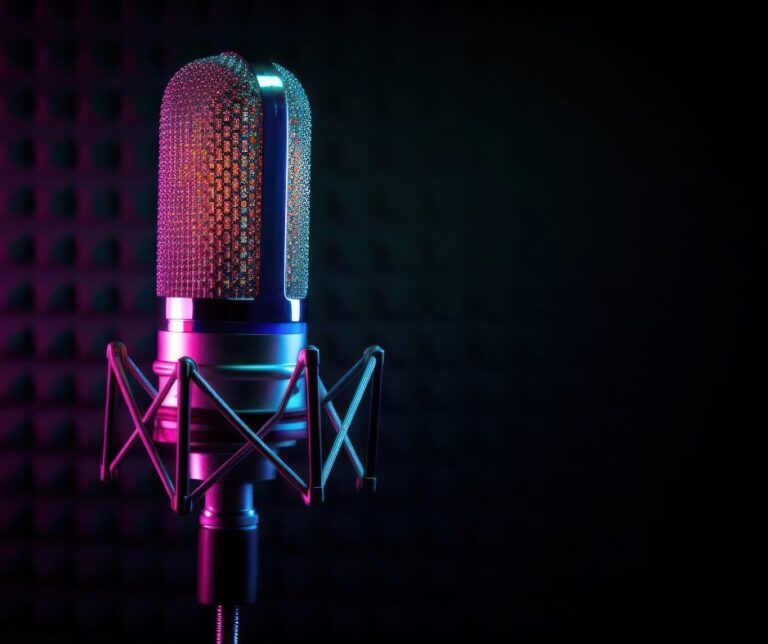The Importance of Proper Soundproofing for Your Podcast Studio: Tips and Tricks
From the hiss of the microphone to the thunderous roar of neighboring construction, soundproofing a podcast studio is a daunting task for any podcaster. Whether you’re a professional broadcaster, a novice vlogger, or an aspiring comedian, ensuring that your studio is well-insulated and acoustically treated is essential to producing high-quality content that resonates with your audience.
With more and more people turning to podcasting as an alternative to traditional forms of media, it’s never been more important to create a space that allows you to share your thoughts and ideas in the most clear and concise way possible. So, if you’re looking for tips for soundproofing a podcast studio, read on to discover what you need to know about creating a soundproof haven that will take your podcasts to new heights.
From noise-reducing curtains to acoustic foam panels, we’ve got you covered with all the latest techniques and tricks to help you produce stunning podcasts with crystal-clear sound. So, grab your headphones, sit back, and get ready to explore the world of podcast studio soundproofing like never before!
Are you tired of recording your podcast in a noisy and distracting environment? If so, you need to invest in proper soundproofing for your podcast studio. This is important if you want your podcast to sound professional and engaging to your listeners.
So, to help you out, we’ve put together some tips and tricks for soundproofing your podcast studio.First and foremost, you need to find the right location for your studio.
This means picking a room that is far away from any noisy areas, such as traffic or busy streets. Additionally, consider the acoustics of the space.
You don’t want to be recording in a room that has a lot of echo, since this can be distracting to your listeners.Once you’ve found the perfect location for your studio, it’s time to start soundproofing.
One of the simplest ways to do this is by using acoustic foam panels. These panels can be placed on the walls of your studio to absorb sound waves, thus preventing noise from entering or exiting the space.
Another option is to install soundproof curtains or acoustic blankets. These can be hung on windows or doorways to reduce noise from outside or inside the studio.
If you’re serious about soundproofing your podcast studio, you may want to consider building a custom isolation booth. This is a small soundproof room where you can record your podcast without any external noise interfering.
Of course, there are other things you can do to improve the sound quality of your podcast, such as investing in high-quality microphones and monitoring speakers, but soundproofing your studio is the first step. In conclusion, soundproofing your podcast studio is crucial if you want to produce a professional-sounding podcast that engages and entertains your listeners.
By carefully selecting your recording space and investing in appropriate soundproofing materials, you can ensure that your podcast is the best it can be. So, don’t wait any longer – start soundproofing your podcast studio today!
Book Your Next Project With Us
Boost your creative process at Media Pouch Studios – your all-in-one hub for creation and growth
Understanding soundproofing basics
It is no secret that podcasts have become increasingly popular in recent years. The idea of sitting down with a microphone and discussing a wide range of topics has attracted many individuals, from those who want to start their own business to people who simply want to share their hobbies with the world.
However, creating a successful podcast requires more than just good conversation – to truly stand out in the crowded world of podcasting, it is essential to have high-quality equipment and a well-insulated studio. This is where soundproofing becomes crucial.
Understanding soundproofing basics can help you make the most of your podcast equipment, and ultimately produce a more professional and polished product. When it comes to soundproofing podcast equipment, there are a few key things to keep in mind.
For one, the goal is not to completely eliminate all noise, but rather to minimize it as much as possible. This can be achieved through a combination of insulation, sound-absorbing materials, and proper placement of equipment.
Ultimately, the key to successful soundproofing is to experiment until you find the combination that works best for your unique podcast. Whether you’re a seasoned veteran or just starting out, taking the time to understand soundproofing basics can go a long way in making your podcast stand out from the crowd.
Choosing the right materials
The success of your podcast largely depends on the quality of your audio. And one of the key factors that affect audio quality is soundproofing.
In this section, we will look at some tips and tricks to help you choose the right materials for proper soundproofing and microphone placement for podcasting.Firstly, it’s essential to understand the soundproofing materials available in the market.
Some of the most effective materials include acoustic foam, mineral wool, and mass loaded vinyl. The key is to choose the material that best suits your studio space and budget.
When it comes to microphone placement, it is crucial to consider the distance, angle, and direction of the microphone. A good starting point is to place the microphone at a distance of about six inches from the mouth and at a 45-degree angle.
Keep in mind that the proximity of the microphone to the mouth affects the bass and treble levels in the sound. In addition to choosing the right materials and microphone placement, it’s also crucial to consider other factors that affect sound quality, such as the acoustics of your room.
A well-designed room with proper wall insulation and diffusers can help reduce noise reflections, leading to a more professional sound. It’s important to note that even with the best materials and placement, soundproofing is an ongoing process that requires frequent adjustments and tweaks.
However, with the right equipment and knowledge, you can achieve professional-grade sound quality for your podcast. In conclusion, soundproofing and microphone placement are essential factors in ensuring high-quality audio for your podcast.
By choosing the right materials and paying attention to other factors such as room acoustics, you can create a professional sound that will keep your audience coming back for more.
Soundproofing walls and floors
Creating a professional podcast sound with soundproofing can seem daunting, but it’s an essential step in producing quality content. Soundproofing walls and floors can prevent unwanted sound from seeping into your recordings, which can help you maintain focus and ensure that your listeners are getting the best possible experience.
But where do you begin? One of the most common tips for soundproofing your studio is to use mass-loaded vinyl as a barrier between you and the outside world. It’s a dense material that can help absorb sound waves and keep them from bouncing around the room.
You can also use insulation, specialized curtains, or even foam tiles to reduce echo and improve sound quality. However, it’s worth noting that soundproofing is not a one-size-fits-all solution.
The acoustics of your space, the type of microphone you use, and even your own voice can all impact the way your recordings sound. It’s important to experiment with different methods and find what works for you to create an ideal recording environment.
And remember, the goal of soundproofing is not to create complete silence, but to minimize unwanted noise and create a clear, professional sound. By investing time and effort into soundproofing your podcast studio, you’ll be one step closer to producing top-notch content that your audience will love.
Addressing windows and doors
When it comes to creating a top-quality podcast, it’s essential to pay attention to every detail – from the content to the equipment, and everything in between. One of the most important factors to consider when setting up a podcast studio is the acoustics of the space.
Soundproofing is an essential aspect of any recording studio, but when it comes to podcasting, it is especially crucial. One of the areas where sound can leak in and disrupt your recordings is through the windows and doors.
Fortunately, there are several tips and tricks you can use to soundproof these areas.Firstly, it’s worth considering purchasing acoustic curtains or blinds.
These products are designed to absorb sound waves and reduce the amount of noise that enters the room. Another option is to use weatherstripping or draft excluders around the edges of the doors and windows.
This will create a tight seal and prevent any sound from escaping or entering the room. If you’re on a tight budget, you can also use a heavy blanket or duvet to cover the windows or doors.
Just be sure to secure it tightly in place, so it doesn’t fall down during recording!When it comes to door soundproofing, one key point to consider is the door sweep. This is the strip of material that runs along the bottom of the door and creates a seal when the door is closed.
If your door sweep is worn or damaged, sound can leak through easily. To fix this, replace the door sweep with a new one designed for soundproofing.
As you can see, soundproofing your podcast studio is crucial, and addressing the windows and doors is an excellent place to start. With a few simple tips and tricks, you’ll be well on your way to creating a top-quality, professional-sounding podcast.
So, be sure to keep these tips for soundproofing a podcast studio in mind as you set up your recording space – your ears (and your listeners) will thank you!
Dealing with sound leaks
Have you ever listened to a podcast and been distracted by random background noise, like someone’s dog barking or a car honking in the distance? It can be frustrating for the listener, and it reflects poorly on the podcaster. To avoid this pitfall, it’s crucial to have proper soundproofing in place in your podcast studio.
With the rise in popularity of podcasting, soundproofing technology for podcasters has also improved in recent years. However, there are still many common mistakes that podcasters make, which can result in sound leaks and ultimately, lower quality content.
One common mistake is neglecting the importance of acoustic treatment. While soundproofing aims to keep outside noise from entering your studio, acoustic treatment aims to dampen the sound waves within your studio to achieve a cleaner, clearer sound.
This can be achieved through materials like foam panels, which can be strategically placed on walls and ceilings. Another mistake is not properly sealing off small openings, like gaps around windows, doors, and air ducts.
These can allow outside noise to leak into your studio, so it’s important to use materials like weatherstripping and soundproof curtains to close these gaps. In addition, it’s important to consider the type of microphone you’re using.
Some microphones, like condenser mics, are more sensitive and can pick up more background noise than dynamic mics. However, condenser mics also tend to capture more detail and nuance in the sound, so it’s important to weigh the pros and cons and choose the best microphone for your specific needs.
Overall, soundproofing technology for podcasters has come a long way, but it’s important to stay up to date on best practices and avoid common mistakes. With proper soundproofing and acoustic treatment, you can ensure that your podcast sounds professional and engaging, and that your listeners stay focused on the content instead of the distractions around it.
Acoustic treatment for optimal sound
Are you tired of recording your podcast episodes in a space with subpar acoustics? Do you struggle to capture clear, crisp audio due to outside noise or echoes within the room? Look no further than proper soundproofing techniques to enhance the overall quality of your podcast. By utilizing acoustic treatment, you can drastically reduce unwanted noise and reverberation within your recording space.
This not only leads to a more professional sounding product, but also creates a more comfortable environment for you and your guests to record in. And let’s face it, no one wants to listen to a podcast with distracting background noise or echoey vocals.
So, what exactly constitutes proper soundproofing? There are a variety of techniques and tools available, from DIY solutions like hanging heavy curtains or using acoustic foam panels to hiring a professional to install soundproof walls or ceilings. Additionally, the layout and design of your space can play a big role in the acoustics of your recordings.
But why does soundproofing improve podcast audio quality? It all comes down to minimizing factors that can negatively impact the clarity of your recordings. By reducing external noise and limiting reverberation, your vocal recordings will sound cleaner and more professional.
And let’s not forget the potential for increased listener engagement and retention when they can easily understand and enjoy your content. So, whether you’re a seasoned podcaster or just starting out, consider investing in proper soundproofing techniques for your recording space.
Not only will it enhance the overall quality of your podcast, but it will also elevate your professionalism and credibility in the eyes (and ears) of your audience.
Avoiding common mistakes
If you’ve ever listened to a podcast with constant background noise, you know how distracting it can be. And if you’re a podcaster who’s ever recorded in a space that’s not quite soundproofed, you know how frustrating it can be to constantly re-record due to excess noise.
That’s why it’s crucial to prioritize proper soundproofing for your podcast studio. But where to start? First, avoid the common mistake of assuming that foam “soundproofing” panels are all you need.
While they can help absorb sound, they’re not enough on their own to soundproof a space. Instead, consider specialized acoustic treatments, like bass traps and diffusers, which can help disrupt sound waves and prevent unwanted echoes.
Another mistake to avoid is neglecting to seal off any gaps or cracks in your studio space. Sound can easily sneak in through even the tiniest opening, so be sure to use weather-stripping, acoustic caulk, or door sweeps to seal off any cracks.
And don’t forget about your studio’s ventilation system—ventilation grates can easily let in excess noise, so be sure to invest in high-quality, sound-resistant vents. These are just a few tricks for soundproofing a podcast studio, but they can make a world of difference when it comes to recording clean, clear, distraction-free audio.
So next time you’re setting up your podcasting space, take the time to invest in proper soundproofing materials—you won’t regret it.
Book Your Next Project With Us
Boost your creative process at Media Pouch Studios – your all-in-one hub for creation and growth
Enhancing the listener experience.
In the digital age, podcasting has become one of the most popular means of creating and distributing content to a growing, engaged audience. However, there’s more to producing successful podcasts than just picking up a microphone or sitting in front of a computer screen.
To ensure that your show is taken seriously, it’s important to consider the listener experience. This involves finding the right soundproofing materials for a podcast studio, enhancing sound quality, minimizing background noise, and delivering a seamless auditory experience.
Despite the apparent simplicity of recording a podcast, nailing the perfect sound can be an exhaustive process that requires careful attention to detail. Do you want your audience to be distracted by extraneous noise, echoes, or other distracting factors? Creating an immersive listening environment requires that you invest in the right materials, techniques, and processes to eliminate unwanted sounds and ensure a clear, crisp final product.
With so many options on the market, finding the right soundproofing materials for your podcast studio can be a daunting task. Don’t despair, though – with the right guidance, you can optimize your workflow, minimize distractions, and create a truly immersive listening experience for your audience.
Last words
In conclusion, podcast studio soundproofing is a crucial element to consider for any aspiring podcaster. Whether you are an experienced professional or just starting out, creating a comfortable and undisturbed environment is key to producing high-quality content.
The benefits of soundproofing go beyond just the reduction of external noise, it also ensures a consistent sound and eliminates any unwanted acoustic reflections. However, designing the perfect soundproofed studio can be a challenging and complex task, requiring careful planning and attention to detail.
From selecting the right materials to decreasing reverb time and controlling noise transmission, soundproofing success requires expertise and experience. But with dedication and the right resources, you can achieve the perfect podcasting space that delivers a superior listening experience for your audience.
So, whether you’re recording your next podcast episode, producing a radio interview or recording a musical track, investing in soundproofing your studio is a wise decision that will undoubtedly pay off in the long run. So, go ahead and create a space that’s not only functional but is also conducive to your creativity and success as a podcaster.
It’s time to take your recording game to the next level, and soundproofing is a crucial ingredient in that recipe for success. Happy recording!


